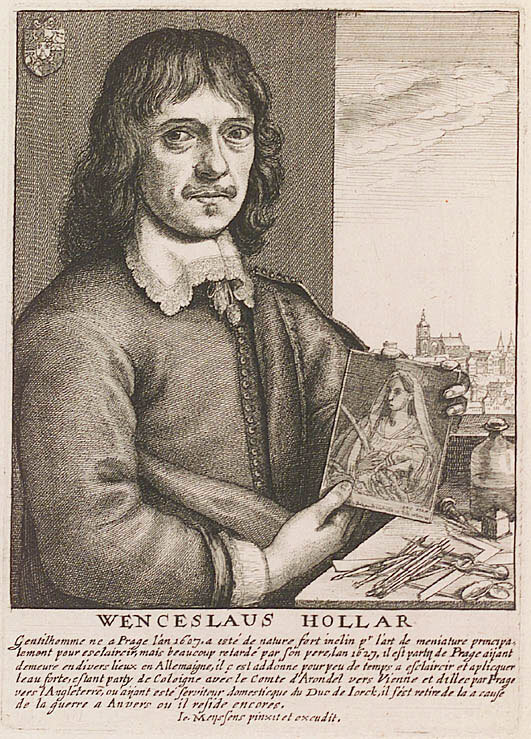Wenceslas Hollar
(1607 - 1677)

Wenceslas Hollar was born in Prague, but lived a peripatetic life, mostly spent in London, but with spells in Stuttgart, Strasbourg, Frankfurt am Main, Cologne and Antwerp. In London he was employed as “Serviteur domesticque” to Prince James, perhaps as a drawing master to Prince Charles (later King Charles I) and Prince James, and in 1660 appointed as King’s Iconographer, or Designer of Prospects to the King. He is one of the greatest etchers and engravers, and certainly among the most prolific, leaving a large body of work behind, mostly topographical or decorative but with a substantial element of maps. In total, he is thought to have produced about two thousand five hundred pieces.
Hollar had a characteristic engraving style that allows his unsigned work to be identified with some certainty; he was a popular jobbing engraver, working for other publishers, so this is an important element in quantifying his work. One of the important elements of Hollar’s career not much remarked on is that his output made it possible for authors and publishers to illustrate their books with maps, which made a significant contribution to the growth of the London map trade. He worked for mapmakers including Peter Stent, John Overton, Richard Blome, John Ogilby and John Seller.
There are any number of important maps by Hollar, but a few highlights are his map of the British Isles, with part of Europe, contrasting the political and military strife in his homeland in the 1620s with the situation in England in the 1640s. He planned a wall-map of London in 1658, but this plan was curtailed by the Great Fire of 1660; only the proposal and two map-sheets survive, although he produced A Map or Groundplot of the Citty of London and the Suburbes…by which is exactly demonstrated the present condition thereof, since the last sad accident of fire in 1666, and later contributed to John Ogilby and William Morgan’s two large maps of the City of London in 1676 and 1677. He also contributed to Jonas Moore’s A Mapp Of The Citty Of Tangier (1664), and Robert Morden and William Berry’s A New Map of the English Plantations in America (1673).
Although Hollar was extremely industrious throughout his life, when he died his possessions amounted to little more than a bed and some pots and pans.
 地图
地图  地图集
地图集  珍本
珍本  版画
版画  天文仪器
天文仪器 






